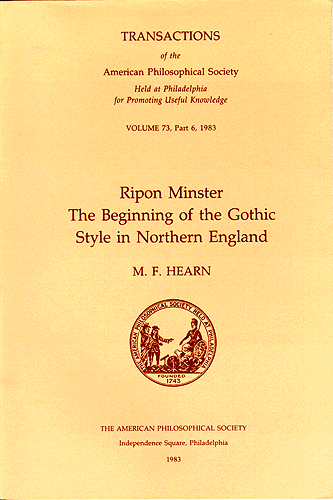

Ripon Minster and the Beginning of the Gothic Style in
Ripon Minster, a functioning cathedral in Yorkshire, constitutes in its higgledy-piggledy whole one of the least ingratiating medieval buildings in Great Britain, but it preserves precious fragments of its original late twelfth-century form. These fragments are of the first importance because they are contemporaneous with the Early Gothic eastern arm of Canterbury Cathedral (1175-1184), normally regarded as the first Gothic church in England and they are the earliest surviving manifestation of the Gothic style in the north of England. They aid enormously, then, in the interpretation of what the English thought this new style in architecture was really about.
This study reconstitutes both the original design and the revised, built form of the Minster. It establishes the chronology of construction (c. 1175-c. 1220) and demonstrates that the design did not evolve, as formerly held, from the early Cistercian Gothic architecture of England. Instead, it shows that the designer was familiar with the latest Gothic construction in France. He could have observed the various elements of the design in churches seen on his way from the building site where he had been working to the English Channel, prior to embarking for his new commission in Yorkshire.
The patron of the new Minster at Ripon, the Archbishop of York (Roger of Pont l'Eveque), had, in his early career in the chancellery of the Archbishop of Canterbury, been a rival of the young Thomas Becket, who had later bested him by becoming not only the primate of all England but also, after his murder in Canterbury Cathedral, a saint and the focus of a major pilgrimage. In this book Ripon Minster is interpreted as being Roger's attempt to establish a cult of St. Wilfrid at Ripon, rivaling that of St. Thomas at Canterbury, with a church of equally up-to-date French stylistic credentials.
Drawing upon the contemporaneity of Ripon and Canterbury, the text employs the passage in the famous descriptive tract of Gervase of Canterbury that compares the new (Gothic) work at Canterbury with the old (Romanesque) work to define the English conception of the gothic style in architecture. It imputes to the English a primary appreciation in Gothic construction of the dynamic character of the sculptural lines produced by coordinated shafts and arch moldings, used in conjunction with pointed arches, over the skeletal structure of French churches.
